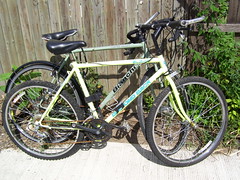Call for Drummers!!
Haitian Drumming Sessions after the Streetside Symphony
Sunday, September 9th
Haitian Tombou drummers are incredible.
If you play bongos or congas, or anything that can hold a beat, come bring an instrument and play after the streetside Haitian Symphony this Sunday, September 9th at the Bloomingdale Farmers’ Market.
Drummers will be playing before and after the classical music performance. The symphony should be over by around 1:30pm, so bring a drum and see what happens.
Just a Few More Days Until …. Haitian Choral & Orchestral Symphony and Free Neighborhood Pig Roast
See this message from Big Bear Cafe’s Stu Davenport:
Haitian Choral and Orchestral Symphony, and Free Neighborhood Pork Roast!
Sunday, September 9th, Bloomingdale Farmers’ Market
We have raised over $500, and we are almost ready for the BBQ. Special thanks to Councilmen Harry Thomas Jr., and Kwame Brown for their support…. and commissioner John Salatti for helping get the money together. This should be a lot of fun.
On September 9th, Les Petits Chanteurs will be performing at the 10am service at St. George’s Episcopal Church, and then around 12 noon the group along with the congregation of St. George’s will be coming to the Bloomingdale Farmers’ Market for the street side Caribbean symphony…
Bloomingdale Farmers’ Market
10am-2pm
First and R Streets, NW
message from Martha Cherlot from the Embassy of Haiti:
===========================================================================
A Haitian Choral and Orchestral Symphony, and Free Neighborhood
Pork Roast!
Sunday, September 9th at the Bloomingdale Farmers’ Market
Come to the Bloomingdale Farmers’ Market Sunday September 9th for a free neighborhood Bar-B-Que!
There will be free-range pork and lamb on the grille, vegetables and fruits in the stands, and a full suckling pig roasting in a fire pit!
There will also be music from a group of 50+ choral and classical musicians from Port Au Prince, Haiti, playing with six violins, two violas, two cellos, a double bass, a flute, and a Haitian tambour drum.
Come and celebrate the Bloomingdale
Farmers’ Market!
Come and help us thank everyone who has helped make it a reality..
Sunday, September 9th
First and R Streets, NW
10am-2pm
—
Robin Shuster
Markets & More, LLC
Director, Mount Pleasant Farmers’ Market
14 & U Farmers Market
1318 Wallach Place NW
Washington, DC 20009
1-(202)-536-5571
703-328-6559
The Bloomingdale Farmers’ Market:
June 17- November 18th, 2007
Rain or Shine
Sundays, 10-2
First and R Streets NW
right next to the new Big Bear Cafe
We welcome WIC and CSFP Senior Farmers Market Coupons.

